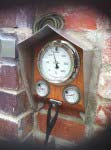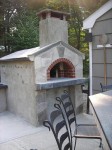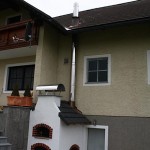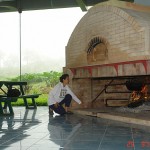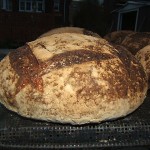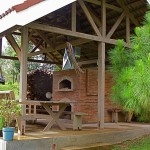back to board Main Page
Re: Dry clay?
From the WFO board
Posted by Rado (203.164.249.20)
In Reply to: Re: Dry clay? posted by Robert Richard
Hi Robert,
Yes pottery supplies sell dry powdered clay bodies and also fireclay used in oven building for heat resistant mortar. They are the same except fireclay is not finely sieved it has some small stones/sand in content, and powdered clay which potters use is very fine as the small stones were removed by fine sieving process. Both, the fireclay or fine potter s clay powder(s) are actually (simply put) just a dry mud that is great refractory for all kinds of uses. For refractory mortar amount it won't matter a lot which clay to use, either the fine powdered clay or the fireclay will have sand mixed in as per recipe when mixing the mortar. Sand in the mix is very important it makes the mortar less shrinking linearly on drying and then further in fire condition.
First ask if they store dry fireclay in bags (in the cdrom you will find fireclay picture as well.) People who sell firebricks sell also fireclay or ready mixed mortar. If for any reason you can t get it: In my oven building CD's "Equivalent material and sources" reading I talk about heat resistant mortar matters, types of clays and how to use clays, how clays shrink as well as how to locate/find and collect free your own clay from the nature for making own top refractory mortars, how to powder free found clay or how to make leather dry (semi dry) adobe tiles for building e.g. avocado shape clay ovens, then heat insulations and a render weather finish types on top.
Work with the pottery fine clay powder when mixed with sand is not too different, sand has to be added otherwise it'll shrink too much - 10% +. Ask for a low fire types or earthenware. Originally these are being used for slip casting of pots in plaster moulds, or for making decorative colored slips, these have very fine mesh# (120# they use I think), rather a lot more finer then many types of wet clay bodies used e.g. for throwing on potter's wheel. Pottery supplies shops sell these wet clay blocks although 10-15kg gets to 8-12 bucks (paying high price for water if quantity's needed), good for but using it for making adobes would be dear.
Clay ovens are a great fun, when made properly they can be installed indoors for house heating while efficient cooking in is taking place. But one has to remember that such clay or clay adobe tiles is unstabilized so e.g. when hit with firewood inside the hot face will peal, clay firebricks are fired in kilns, they won't peal down, in wood fire temperatures their linear shrinkage is near to zero. Firebrick ovens (or adobe) are made of many fragments therefore no large cracks surprises! Thanks, r.
Re: Dry clay?
- Re: Dry clay? - Robert Richard
- Re: Dry clay? - Rado
- Re: Dry clay? - Rado

Jamie and Katrina's brick oven with temperature gauge, in Victoria.
Concrete blocks used for the oven’s outer walls. By Joe in Connecticut USA
Wood fired family oven and chimney project by Robert in Austria
My oven with fireplace, cook food and heat water, by Joel in Philippines
Baking sourdough breads in quantity in Canada
Pizza oven and hut built by Tony in Philippines
